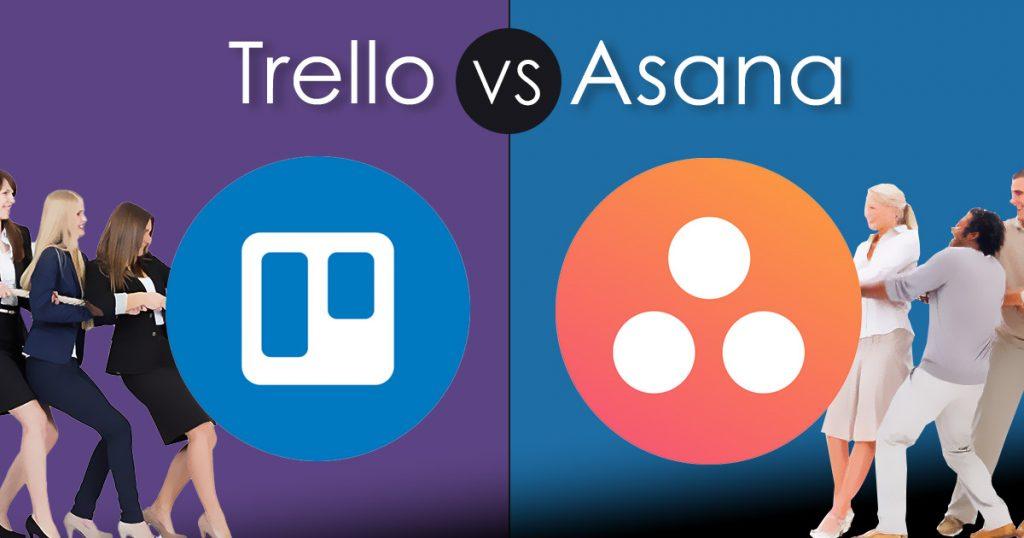Choosing between Trello and Asana can be challenging when looking for the best project management tool. Both are popular for task management and team collaboration, although they fulfill different functions. To see which tool fits your needs, you need to compare Asana and Trello through their differences.
Getting To Know Trello and Asana
Trello is a user-friendly project management application. It’s ideal for small groups or individuals that want straightforward, visual work management. Trello employs Kanban-style boards to help you manage tasks with cards, lists, and boards. It works best for teams that need straightforward task management without extra complexity. Here are its features:
- It uses Kanban boards to visually organize tasks at different stages.
- Its customizable cards allow you to add files, comments, due dates, and team members.
- The Butler automation tool simplifies repetitive tasks, saving you time.
- You can extend Trello’s functionality with Power-Ups like Google Drive and Slack.
- The interface is straightforward and easy to use, making it ideal for beginners.
Asana is a more advanced project management tool. It’s designed for teams handling larger projects or complex workflows. Asana, unlike Trello, provides various views such as lists, timelines, and calendars to assist you in managing your tasks effectively. It is ideal for teams that need detailed project tracking and advanced collaboration features. Here are the features:
- Multiple Views let you switch between board, list, calendar, or timeline formats to organize your tasks.
- Task dependencies allow you to specify which tasks must be accomplished before the others may begin.
- Team Collaboration features enable you to share updates, tag teammates, and add comments on tasks.
- Workload management allows you to track how much work each team member is handling.
- Advanced Integrations integrate Asana with platforms such as Zoom, Salesforce, and Microsoft Teams to create smooth processes.
Difference Between Asana and Trello
When comparing Trello and Asana, their strengths in usability, task management, and collaboration stand out. Each tool is designed for different team needs and project types.
User Interface and Experience
Trello’s interface is simple, visual, and easy to use. Trello’s interface, which allows you to drag and drop cards between lists to track task progress, is ideal for beginners.
Asana offers multiple views like list, board, calendar, and timeline, giving users flexibility in organizing their work. However, the many features can feel overwhelming at first.
Task Management
In Trello, you can create cards with due dates, checklists, attachments, and comments for basic task management. Advanced features like task dependencies require third-party Power-Ups.
Asana includes features like subtasks, recurring tasks, and built-in dependencies, making it better for managing detailed or complex projects.
Collaboration Features
In Trello, team members can comment on cards and attach files, but it lacks more advanced collaboration tools like project message boards.
Asana supports advanced collaboration with project message boards, team conversations, and task assignments, making communication more efficient.
Reporting and Analytics
Trello’s basic reporting is available through Power-Ups, but there are no built-in analytics tools.
Asana has native reporting features with dashboards and tracking tools, making it easier to monitor project progress and team performance.
Integrations
Trello integrates with many third-party apps through Power-Ups, though some features may come with extra costs.
Asana offers numerous integrations, including Slack, Google Drive, and Microsoft Teams, without additional charges for most functionalities.
Pricing Structure
Trello
- Free Plan: $0 (available for both yearly and monthly subscriptions).
- Standard Plan: $5 per user/month (yearly) or $6 per user/month (monthly).
- Premium Plan: $10 per user/month (yearly) or $12.50 per user/month (monthly).
- Enterprise Plan: Pricing available upon request for both yearly and monthly options.
Asana
- Personal Plan: $0 (available for both yearly and monthly subscriptions).
- Starter Plan: $10.99 per user/month (yearly) or $13.49 per user/month (monthly).
- Advanced Plan: $24.99 per user/month (yearly) or $30.49 per user/month (monthly).
- Enterprise Plan: Pricing available upon request for both yearly and monthly options.
- Enterprise+ Plan: Pricing available upon request for both yearly and monthly options.
When to Choose Trello and Asana
Choose Trello if:
- You need a simple tool for managing basic projects.
- Your team prefers a visual manner of managing tasks.
- You have a small staff or simple projects that do not require thorough tracking.
Choose Asana if:
- Your projects involve tasks that need detailed tracking and dependencies.
- You need better tools for team collaboration and communication.
- You want built-in reporting without relying on extra integrations.
Integration Between Trello and Asana
Asana and Trello can work together to make your work easier if your team uses both or is switching between them. Tools like Unito let you sync tasks between both platforms in real-time without needing coding skills. This integration guarantees the sharing of updates between both systems, ensuring everyone remains informed regardless of their tool of choice. Here are the benefits:
- Real-time updates allow changes in one platform to automatically show up in the other.
- Task synchronization generates corresponding tasks in one tool upon the addition of new tasks in the other.
- Custom workflows let you set up integrations based on specific triggers that match your team’s needs.
Which is the Ideal Project Management Tool for Your Team?
When choosing between Trello and Asana, it’s important to think about your team’s needs. Trello works well for small teams and simple projects, while Asana is better for more complex tasks. The main takeaway is that the best tool for your team depends on how you work and what features will help you manage your projects more effectively.
